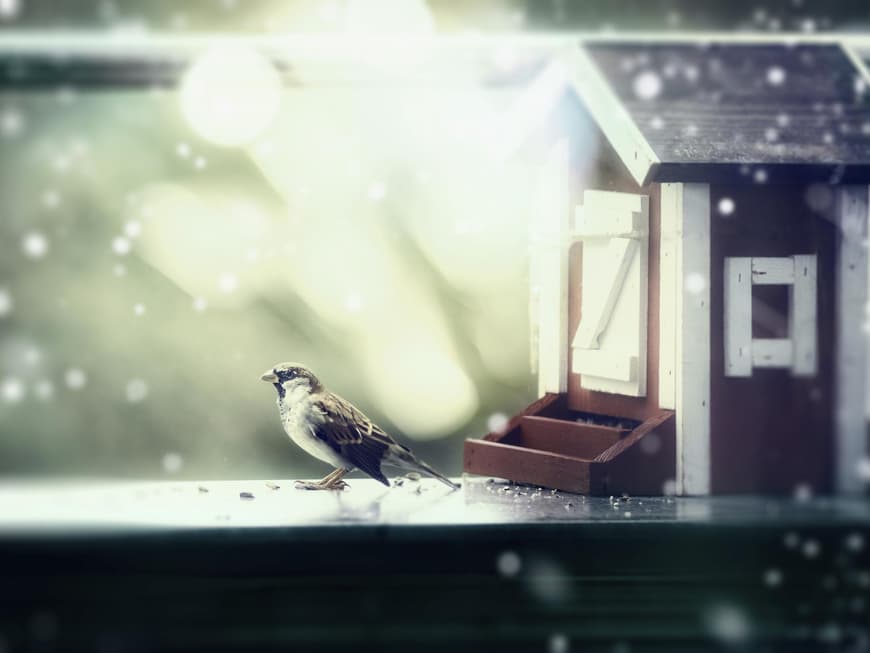
When feeding birds in winter, you should pay particular attention to hygiene. This starts with the choice of feeder. It should protect the food from getting wet and be built in such a way that the food cannot be contaminated by droppings. Otherwise diseases can spread quickly. Feeding columns are therefore the first and best choice.
Hygiene is particularly important when feeding birds
Like traditional feeders, these should also be cleaned regularly. Please do not use any chemicals, just a brush and hot water and, at most, highly diluted vinegar essence. It is also important to always wear rubber gloves, as some diseases, such as salmonellosis, can also be transmitted to humans. The best way to feed birds in winter is to have several small feeders, as this prevents diseases from spreading so quickly.
Feeding birds, but the right way
Bird food is even available in the supermarket during the cold season. Manufacturers of high-quality, ragweed-free and multi-cleaned feed often have their product certified by a bird protection organization. Pay attention to the shelf life and always store feed in a dry and cool place. When placing the feeders, make sure that cats cannot sneak up unnoticed . Three to four meters away from bushes or trees is a good distance
Meat and eggs
Generally speaking, it is not necessary to feed hedgehogs in winter, as hedgehogs hibernate during the cold season. However, if you do find a hungry hedgehog during the day when temperatures are below six degrees, you can help it along with cat food, boiled egg and cooked but unseasoned minced meat. Don't forget some water in a shallow dish! These are often late-born kittens that have not had enough time to put on winter fat. It is best to take a malnourished hedgehog to the vet. Incidentally, hedgehogs can also use a little help in early spring when the ground is still frozen. After hibernation, the food supply is often too meagre.
